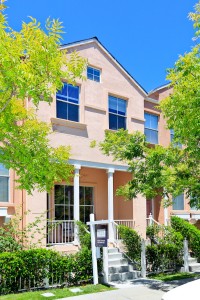 I thought this was an interesting and insightful article written by Michael Malone in the Wall Street Journal today. Dealing with the aspect of real estate in particular, investors have been backing away from paying high dollar costs per square foot in the immediate valley and searching for the next immediate boom area. First time buyers have already experienced the frustration of not being able to afford decent homes on their budgets, deciding to push out further into surrounding communities. The San Jose Mercury News article of recent note wrote that sales of homes over $1M in Santa Cruz County were up over 21% just from June.
I thought this was an interesting and insightful article written by Michael Malone in the Wall Street Journal today. Dealing with the aspect of real estate in particular, investors have been backing away from paying high dollar costs per square foot in the immediate valley and searching for the next immediate boom area. First time buyers have already experienced the frustration of not being able to afford decent homes on their budgets, deciding to push out further into surrounding communities. The San Jose Mercury News article of recent note wrote that sales of homes over $1M in Santa Cruz County were up over 21% just from June.
Here is the article as it was published in the WSJ:
Silicon Valley, especially its San Francisco wing, is richer and more powerful than ever. Yet there are growing murmurs—underscored by plateauing new-jobs numbers and housing prices, street protests in San Francisco over the new ‘plutocrats,’ the lack of exciting new products and a decline of early-stage new investments—that Silicon Valley has finally peaked and begun the downhill slide to irrelevance.
Slide? Perhaps. The Valley has always been characterized by a four-year boom-bust cycle, and the electronics industry is overdue for such a downturn. Yet there is very good reason to believe that not only will the Valley return bigger and stronger than ever, but that it will further consolidate its position against all comers as the World’s High Tech Capital. Here’s why:
• Success breeds success. A major new report being prepared by the Silicon Valley Competitiveness and Innovation Project has found that the region’s dominance is still decisive and growing. While a decade ago the nation’s various tech centers showed a relative balance in creating high-value companies, Silicon Valley (including San Francisco) has now jumped far ahead. The average worker in Silicon Valley generated 50% more output per year than the average U.S. worker in 2012, according to Collaborative Economics Inc.
• The Long Wave: Most observers appreciate the Valley’s four-year cycle, but few have ever noticed a much longer, 20-year cycle in electronics. For nearly two decades since the beginning of the dot-com boom, the Valley has been dominated by software. We have lived in the Era of Code—and with it the gestalt of the programmer. This person is young, single, urban, visionary and utopian: the frat boy turned tycoon. But that era is ending, as a cycle of hardware begins to assert itself in the form of watches, wearables, mobile health, autonomous cars, drones, 3-D printing and a revolution in sensors—all tied together by the cloudlike Internet of Things.
We are entering the Era of Devices. This will be led by builders: older, with a family, suburban and pragmatic. This will undoubtedly result in a Valley more like that of the calculator and PC eras in its style, people and attitudes, and a break from the increasingly protested-against titans of social networking.
This shift is already under way. The epicenter of Silicon Valley has always migrated. With the return to hardware, it is now preparing to leap back to where it began 75 years ago—to Mountain View ( Google GOOGL -0.87% glass, autonomous vehicles), Palo Alto (Tesla, Theranos) and Cupertino (the new Apple headquarters). Even the San Francisco 49ers have moved to a high-tech stadium in Santa Clara. Back to Traditional Valley—and traditional attitudes.
• Population: While Silicon Valley is among the most multicultural communities in the U.S., even more important is the composition of those communities. The Valley immigrant is twice as likely as the average U.S. immigrant to hold a bachelor’s degree. Unlike in the other technology centers, the net influx of these immigrants continues to climb rapidly. If the past is precedent, this will accelerate the creation of new startup companies and patent filings (6% of all patents filed in the U.S. include the name of at least one Valley worker.) There’s a good chance that a decade from now the “face” of Silicon Valley will be an Indian woman CEO.
• Infrastructure: In experienced engineers, incubators, recruiters, contractors and service companies to support entrepreneurs, Silicon Valley remains unequaled. The great universities—Stanford, Berkeley, Santa Clara, UCSF Medical—have only become greater, and they are supported by scores of other universities, community colleges and trade schools. Carnegie-Mellon, Wharton and other famous schools have set up satellite programs or relationships in the Valley.
Perhaps most compelling for the future, the past few years have seen the arrival of research and design laboratories from the likes of BMW BMW.XE -0.94% and Mercedes, Samsung 005930.SE +0.65% and Nissan 7201.TO +0.05% and even General Electric. GE +0.46% Most important, this remains the world’s center of venture capital: Total Valley (including San Francisco) venture investments this year exceed the rest of the country combined, according to the investment-analysis firm CB Insights.
The Valley does still face some serious challenges. While it may not succumb to its traffic and cost-of-living problems, it may soon be compelled to expand. San Francisco’s tech industry is already crossing the Bay to Oakland, while the rest of the Valley is pouring into the East Bay and beyond toward the San Joaquin Valley cities of Tracy (where Amazon has set up a plant) and even Stockton. That is a glimpse of things to come.
It is possible to imagine a “Greater Silicon Valley” of 2050 that stretches from Santa Cruz on the coast, up through Sacramento, 250 miles to the Gold Country and on to Reno/Lake Tahoe. But that will take a profound rethinking of the state’s transportation system. A good start would be for Gov. Jerry Brown to abandon his San Francisco to Los Angeles high-speed-train boondoggle and replace it with an equally high-speed hub-and-spoke system centered in San Jose (and perhaps a separate hub and spoke in Orange County).
The Competitiveness and Innovation Project has found one gaping hole in Silicon Valley: research-grant money, where the Valley trails almost every other tech region. The Valley has always eschewed government money—usually for good reason. But even that may have to change as the Valley can no longer wait for the government-backed Big Science projects, now taking place elsewhere, to power its future. It needs those initiatives, and the talent they attract, closer to home. The peripheral counties of Greater Silicon Valley may be the perfect sites for those big laboratories and research facilities.
Finally, Silicon Valley needs a de facto “mayor,” the person who represents its broad interests, and not those of a particular company, industry or advocacy groups. The Valley began with such individuals—Stanford’s Fred Terman, Dave Packard and then Intel founder Robert Noyce. But that ended with Noyce’s premature death in 1990. Now, poised to reinvent itself one more time and lead the global economy again, Silicon Valley needs another leader to address the great changes to come.
Mr. Malone writes often for the Journal about technology. His latest book is “The Intel Trinity: How Robert Noyce, Gordon Moore and Andrew Grove Built the World’s Most Important Company” (HarperBusiness, 2014).








 .
.








